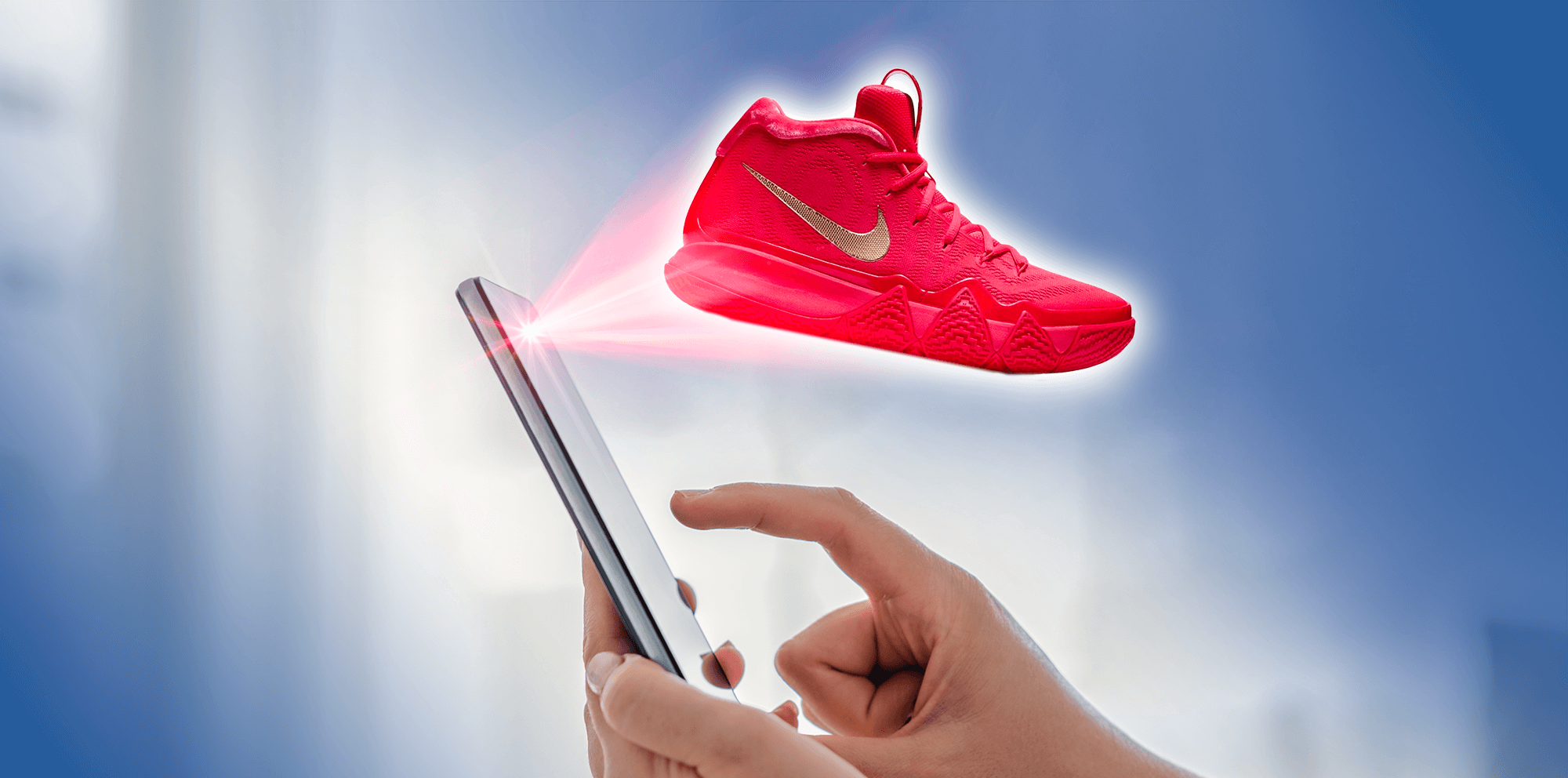Q&A with Facebook’s Chris Barbour, Head of Augmented Reality Camera Partnerships
Whether it’s trying on pair glasses or a pair of sneakers by just using your phone’s camera or viewing through your iPad how a piece of furniture would look like in your living room before buying it, augmented reality is becoming an important part of a brand’s marketing strategy. As we begin to close out a decade and look toward the 2020s and beyond, it’s no surprise that AR is an important part of most tech and mobile companies’ future roadmaps.
I recently got a chance to chat with Chris Barbour, Head of Augmented Reality (AR) Camera Partnerships at Facebook about how augmented reality is impacting marketing, how our phone’s cameras are giving brands a new way to reach audiences, and how Facebook’s Spark AR tool can help brands and creators incorporate AR into their marketing mix.
1) What advice do you give to brands who haven't started incorporating AR into their marketing strategy? Why?
Chris Barbour: We believe AR is playing an increasingly important role in the marketing mix, and that every brand can benefit from crafting and shaping a point of view for where AR fits in its marketing strategy.
Today, AR projects are already helping a variety of brands communicate and connect more effectively with their audiences, and in this process, influencing attitudes and behaviors throughout the marketing funnel. Whether brands are looking to drive more awareness with an entertaining effect or a sale with a virtual trial experience, AR activations can align well to multiple marketing objectives.
Like any emerging medium, it's easy to dive in and use AR for novelty, but our advice is to avoid this temptation. Allowing for test and learn projects is fine, but we think brands starting out with AR should apply the same rigor and logic to AR as to any other marketing medium.
First, a brand should clearly define its marketing objectives and the value AR experiences can create for its audiences. Second, focus on storytelling and how AR can elevate or otherwise bring new dimension, perspective or nuance to any story. And finally, focus on the AR creative and how it helps convey emotion and immersion with each AR experience.
2) What are some examples of how Facebook has successfully leveraged AR with partners to help them amplify their marketing?
CB: Facebook is working with multiple partners to help them leverage AR effectively across both paid and organic marketing campaigns.
For example, Nike participated in the Messenger AR beta and sold out of its exclusive “Kyrie 4” shoes in less than an hour. To see the special offer, users had to enter a series of emojis into a Facebook Messenger-chat message, obtained from Nike's social influencers. Thereafter, they could unlock a Kyrie 4 “red carpet" AR experience with the special offer.
Just Eats launched a marketing campaign during the World Cup that awarded users who downloaded the app with collectible plates featuring illustrations of food. The effect garnered 102K unique impressions — 10% of which went on to place an order on the app within seven days of using the effect. Nearly 75% of the effect's reach was organic, some of which came from influencers using and sharing the effect, like celebrity chef Ainsley Harriott.
In short, we have seen success with brands across the gamut, ranging from entertainment (Justice League, Jurassic World) to product try-on (Sephora, Marc Jacobs). These examples were effective because they were focused on awareness and brand building or easing the path to purchase, two marketing objectives that AR has proven impactful.
3) What do you foresee being the future of Social AR and AR Commerce?
CB: As technology continues to evolve, access to AR experiences will no longer be dependent on smartphones. With the evolution of wearable products, we see a future where personal and contextual information can be directly offered to people as they move through their day.
This provides the opportunity for more meaningful integrations of a person's social graph offline. Promoting in-person interaction and engagement with friends, family, and those that share similar interests. For example, you're walking home and get a notification on your eyeglasses that a foodie group you're interested in is having a meetup just a few blocks away, along with step-by-step walking directions for how to get there.
Additionally, we anticipate commerce becoming more convenient as more context from your day to day life is pulled into ease the purchase journey. For instance, you see someone walking by with shoes you like. In that moment, you receive a prompt that there is a sale on that same shoe at a store a block away. And then you're given the option to purchase your size now with the option to pick up later or have them shipped to your home.
While we are excited to see AR continue to evolve into a more powerful tool in the toolbox, it’s important to note that we do not anticipate it will eclipse other channels for marketing anytime soon.
4) What are some of the key principles and techniques to maximize a brands impact on the Spark AR platform?
CB: While there are a multitude of ways for a brand to optimize its AR activations, here's some initial guidance we can share, based on the success we've seen with the Spark AR platform:
1. AR ideas should be single-minded and focused on accomplishing one objective. Brands should focus on the use cases that drive the most value in AR. Identify what AR can offer that's not possible with other channels, and then build the AR effects or experiences that accomplish that singular purpose.
2. Give agency. Make people the focus and give them control. Brands should be creating an opportunity for people to tell their own unique stories using the AR effects they've created. Keep in mind the person is the main character not the brand.
3. Make it social. Give people a reason to share or use it to connect with each other. If done correctly, people using AR will feel compelled to share their experience with the effect and encourage others to tell their own stories and do the same.
4. Use natural gesture. Keep it simple and keep the effort to a minimum. The more familiar people are with how to engage with a brand effect the more likely they will be to use it. Natural gestures are inherently intuitive and reduce the need to educate people prior to use.
5. Design for immersion. Use light, shadow and shading to make effects feel real. The more realistic the effect looks and feels, the less gimmicky it's perceived. This is especially true with virtual trials. The more realistic the product, the more meaningful the experience.
6. Keep UI in mind. Design around the in-camera UI and the ‘Stories’ UI for when people share. Keep in mind that the Spark AR platform distributes AR effects and experience via Facebook and Instagram. By leveraging UI that is complementary to the discovery points in the app (i.e., Camera, Stories, Posts, etc.) brands can capitalize on existing consumer behavior. Thereby making it easier for people to use and share their experiences.
Chris’ answers should help marketers better understand why AR and camera marketing will not only revolutionize content and commerce but will be one of the technologies that will thrive in a new decade.
At the end of the day, you can’t spell marketing without AR.
Link to Original Story
Interesting in learning more about what augmented reality can do for YOUR business? Reach out today and schedule a free demo!







